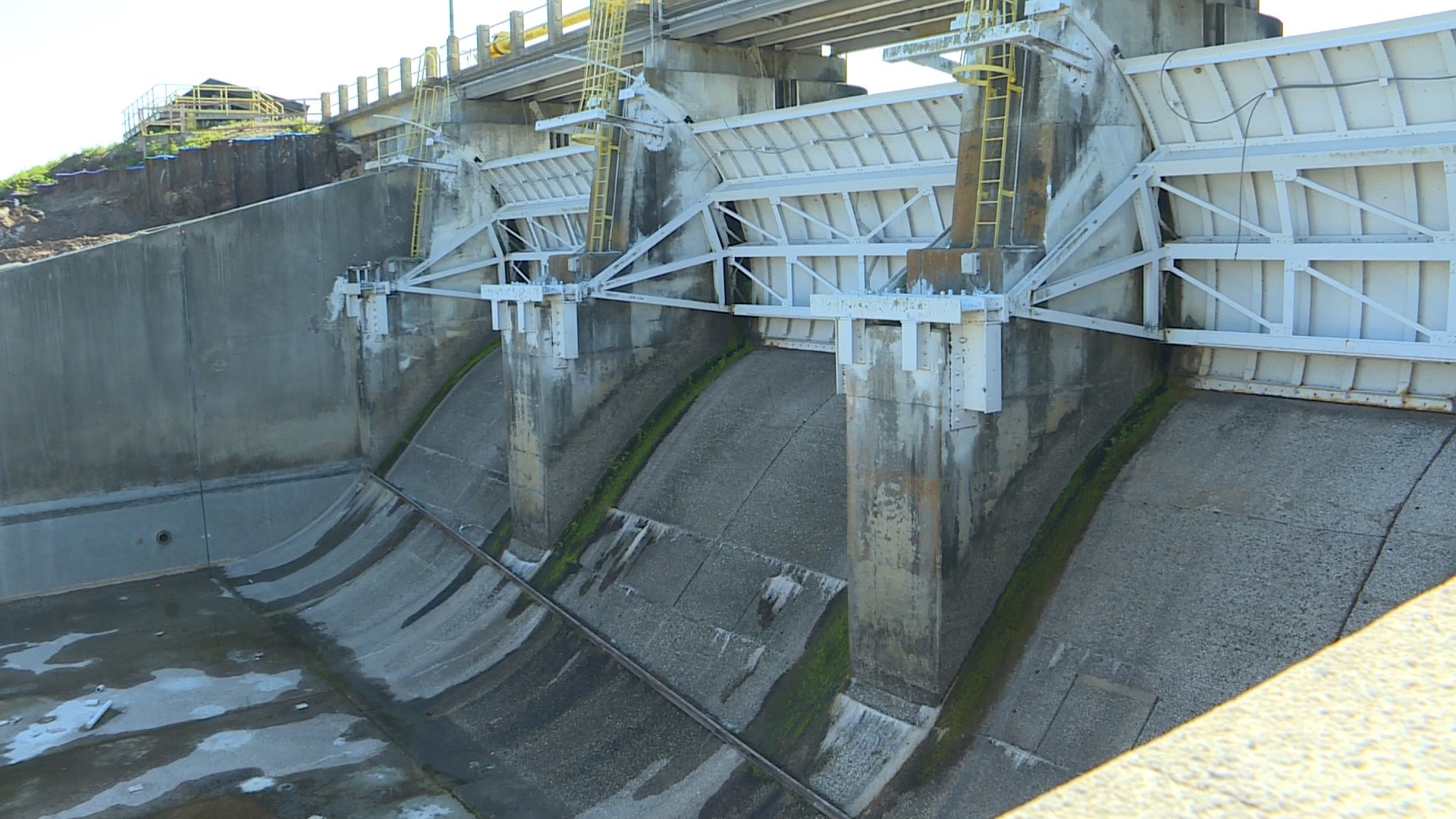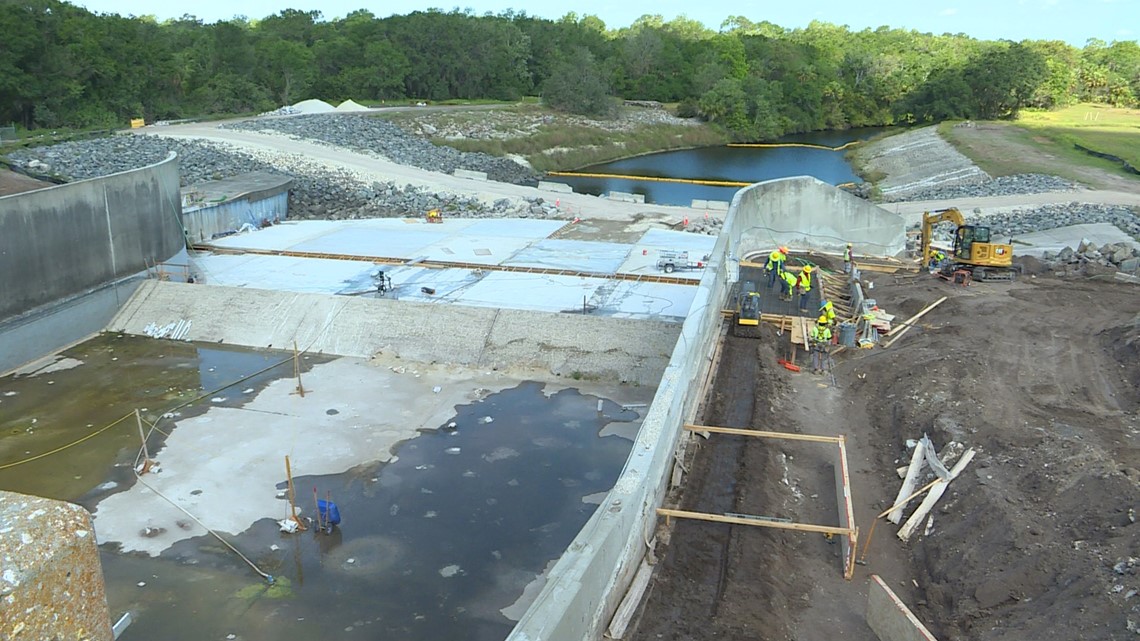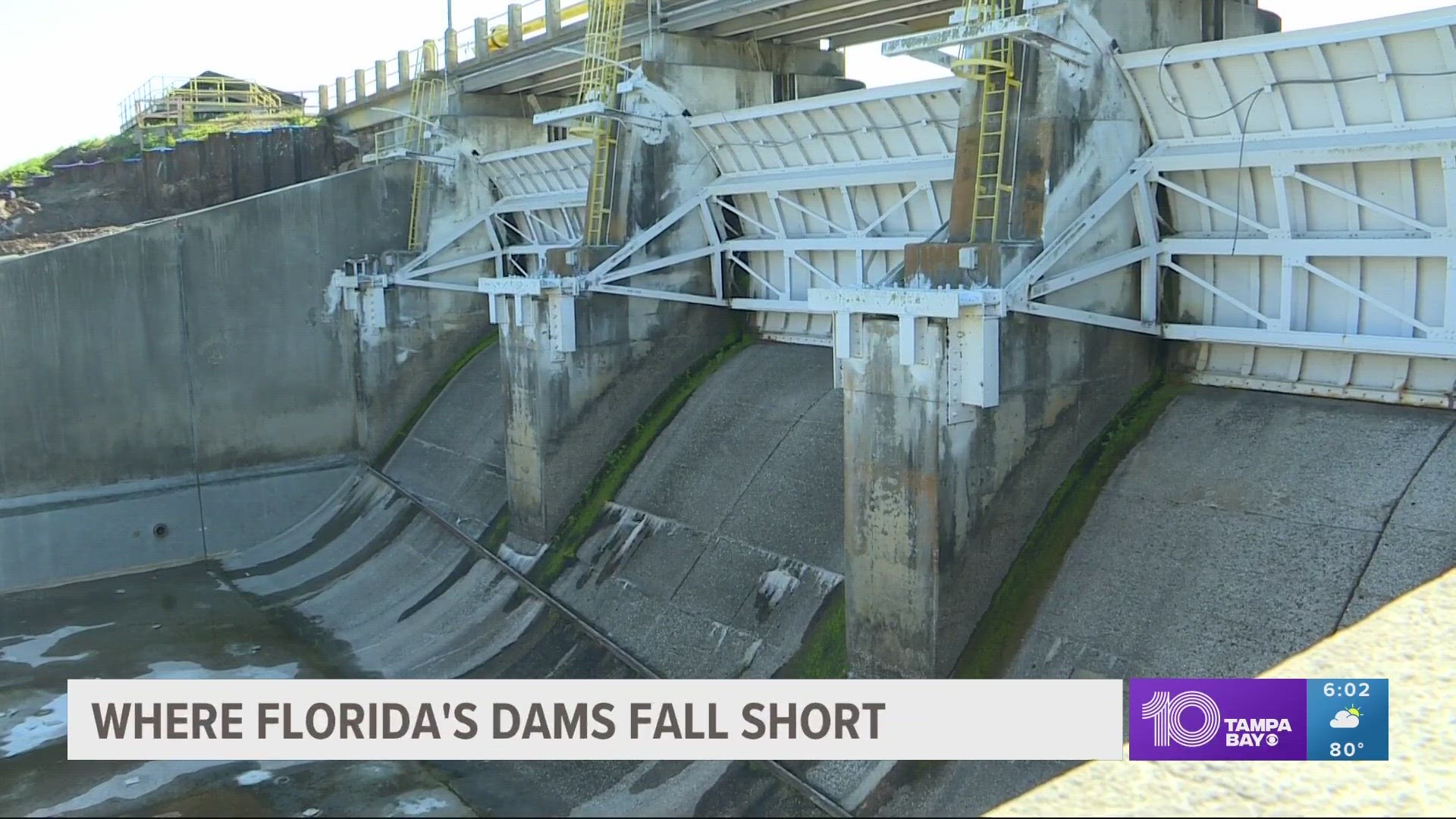Nearly 100 dams in Florida carry a 'high hazard potential' but fewer than half have an emergency plan on record
Dams provide a number of benefits, but with those come risk — a lack of emergency plans in place is among the reasons why Florida's dams earn a D- grade.

Dams provide drinking water, places to boat, fish and often here in Florida, help prevent flooding.
But are Florida dams prepared to handle the next major storm? We've uncovered dozens of them labeled as having a high hazard potential — and only half have emergency plans on record.
Florida has a failing dam grade The Sunshine State doesn't require emergency plans for dams
For decades, anglers like Steve Williamson have been casting a line into Walsingham Reservoir in Largo.
The Pinellas County park offers great fishing, trails and scenic place to escape, but despite how serene the scene may be, there’s an inherent risk every time a major storm comes.
Of Florida’s 1,000+ dams and reservoirs listed on the National Inventory of Dams, roughly 98 have a “high hazard potential," meaning failure could cause death, economic loss and environmental damage.
Among those 98, fewer than half have an Emergency Action Plan (EAP) on record. An EAP is a written document that identifies areas around dams that could be affected, conditions that lead to emergencies and pre-planned actions to minimize impacts.
A lack of EAPs is among the reasons the American Society of Civil Engineers graded Florida's dams a "D-."
One of those without an EAP on record? Walsingham Reservoir.


“We make sure that the dams are operating properly," said Brian Lawton, the section manager for Pinellas County Stormwater Operations.
Lawton runs frequent inspections of the seven dams the agency operates.
Keeping an eye on Pinellas County dams 'We have individual plans in place'
"That's what Pinellas County does, that's what we like to do here. We like to make sure not only annually but again, pre-storm, post-storm, we want to make sure our dams are safe," Lawton added.
The county says while they may not have an EAP on record in the National Dam Inventory, their plan for handling a potential breach falls under the county’s comprehensive Emergency Management and Flood Plan.
"We have the dam breach inundation area mapped. Our response would fall under our regular flood warning and response protocol, which is reflected in our Comprehensive Emergency Management Plan. If there were to be a breach, we would notify affected residents through our alert system," Pinellas County Floodplain Administrator Lisa Foster said.
Adds Rob Burnes, the Project Coordinator with Pinellas County Environmental Management: "We have individual plans in place for each structure depending on if it's a failure, or if it's just we're having a major storm and we need to be able to get our message out to the public."
Repairing Lake Manatee Dam It's emergency repairs now in Phase 2
Florida does not require EAPs for high or significant hazard dams, but private and public dam owners are strongly encouraged to prepare and practice them, because of how crucial they are if something goes wrong.
Sometimes things do. A dam breach in Volusia County sparked by then-Tropical Storm Nicole last fall forced evacuations and sent water into dozens of homes.
In Manatee County, construction is underway to fortify the Lake Manatee Dam, a 55-foot-tall structure that creates Lake Manatee. The dam pumps tens of millions of gallons of drinking water each day, serving nearly two-thirds of the county's growing population.
In 2014, inspections found the critical piece of infrastructure built in the 1960s was at risk of being compromised, which would send billions of gallons of water downstream washing away anything in its path.
"Back in 2014, we found there was some internal erosion in the dam that included erosion in the original core," Katie Gilmore, Deputy Director for Manatee County Utilities Department explained.


Emergency construction was completed back then; now, work is being done in Phase 2 of the project, set to be complete later this spring.
"This portion is to fix that erosion downstream, reestablish proper drainage and seepage and do some mechanical electrical upgrades to our gate system, Gilmore added.
When that issue was uncovered, Manatee County developed its emergency action plan.
"We started an assistance program with FEMA where we actually brought in Manataee County Emergency Management staff to kind of bridge that gap from what we would do if we saw a dam failure from utilities to what they would do on the emergency management side to make sure the public is safe," Gilmore said.


What makes Florida different What are state leaders doing to ensure safety?
According to the Florida Department of Environmental Protection’s website, they work with dam owners to educate them to take these important steps.
10 Tampa Bay reached out directly to see what FDEP does to ensure dam safety and why the state doesn't require High Hazard dams to have an EAP on record and have not yet heard back.
We also talked with the Association of State Dam Safety Officials (ASDSO).
"Florida does not require EAPs for high or significant hazard dams. Florida is different from other states because of the regional water management districts, so some of them might require one. It would be best to confirm with the state regulatory program," ASDSO Communications Director Katelyn Riley said.
"To meet the highest safety standards state dam regulatory programs must require EAPs for high and significant hazard potential dams," Riley added.
As of 2021, only six states across the U.S. reported it doesn't require EAPs for "high hazard potential" dams, according to ASDSO.
The report from the American Society of Civil Engineers says Florida does not have the authority to require dam owners to prepare and practice EAPs, rather the state strongly encourages HHP and SHP dam owners to develop EAPs. They say the state does work with dam owners to develop them and maintain proper structural inspections.
"The Florida Dam Safety Program provides resources for dam owners to conduct those inspections and hire professional engineers to conduct those inspections and develop the condition ratings for their dams," said Kathi Ruvarac, a civil engineer and President-Elect of ASCE, Florida Section.
The program’s funding comes in part, from the National Dam Safety program, but that expires in September. With more work to be done, ASCE is urging Congress to reauthorize and increase funding to support state programs and in turn dam safety. "It's really important," Ruvarac added.
We are still waiting to hear back from FDEP. On May 3, they are holding their annual Dam Owners Safety Workshop, we’ll be listening in and keep you updated on what they discuss.

